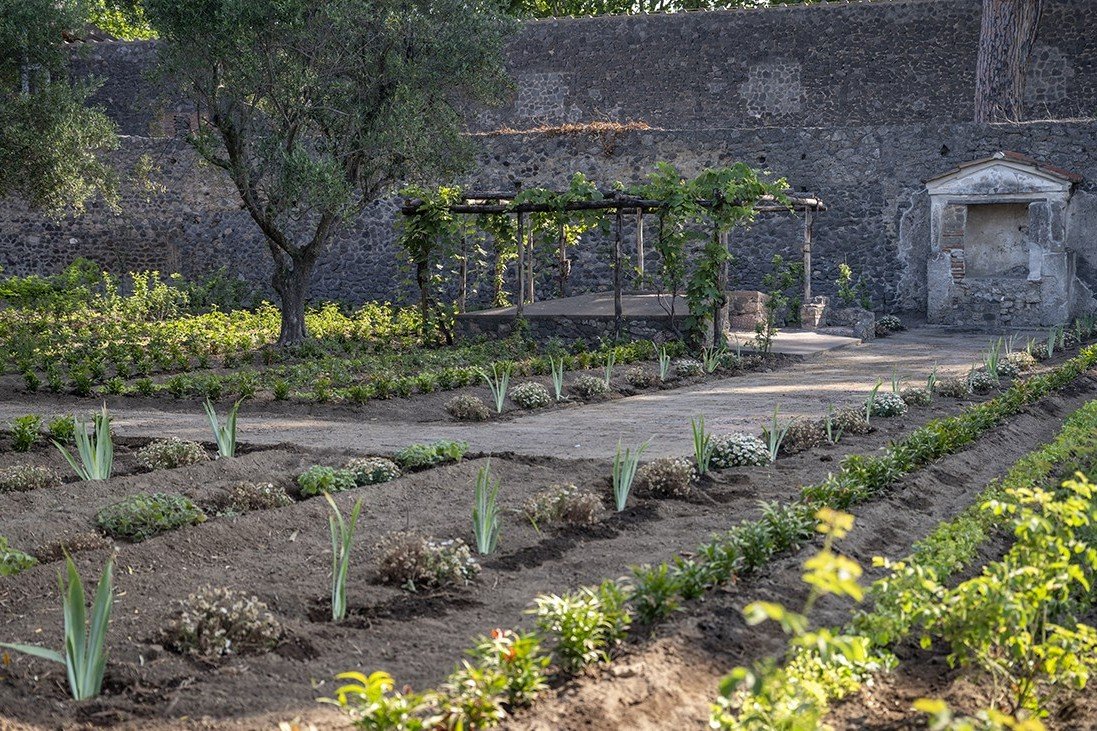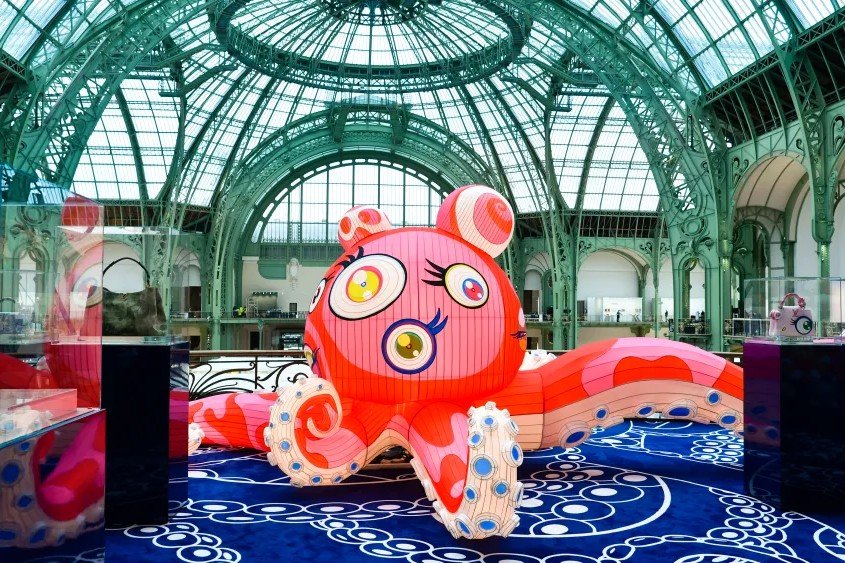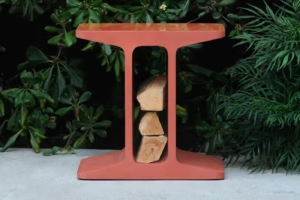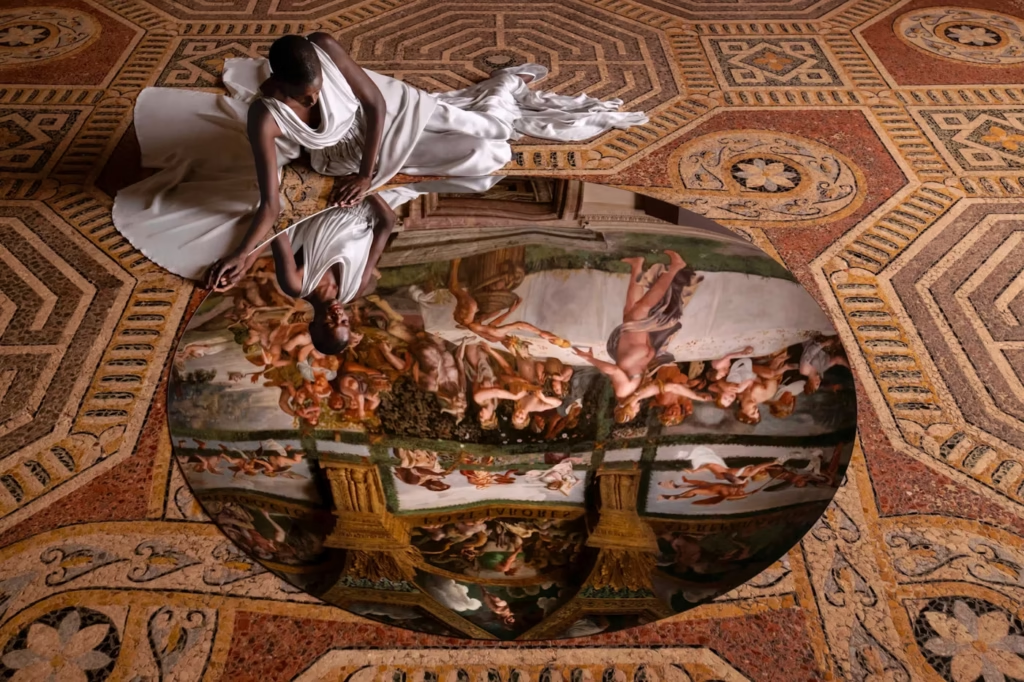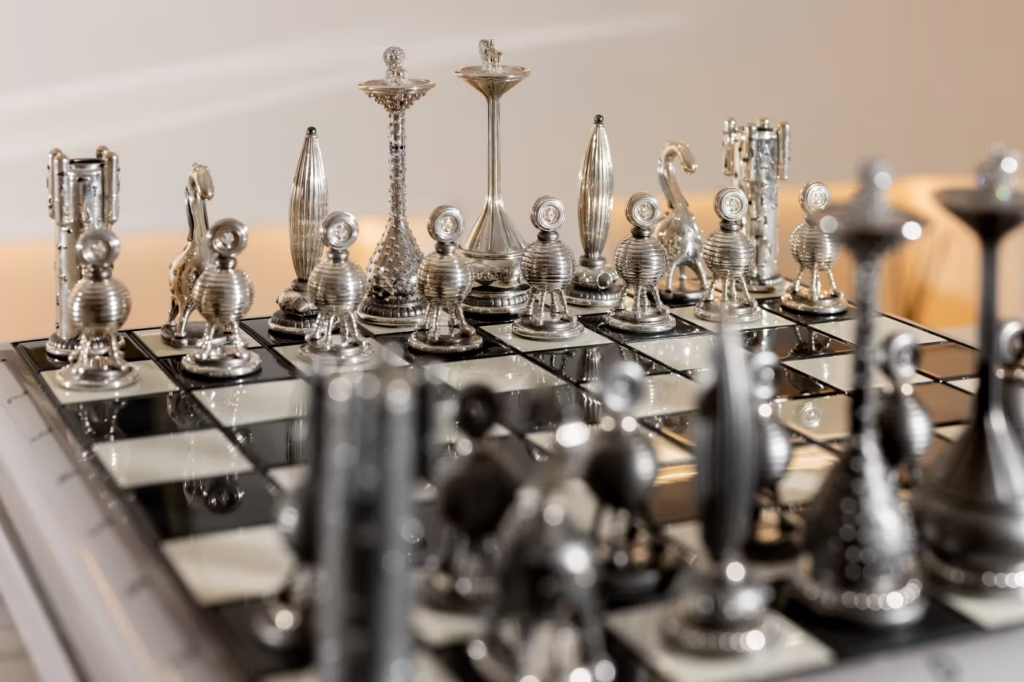Nature and Nostalgia Intertwine
In ancient Pompeii, lush gardens once lined the courtyards of private homes. Olive trees, rose bushes, and grapevines thrived under the Mediterranean sun, nourished by cleverly carved irrigation systems. One such garden, bearing the cheeky Latin sign “Cras Credo” (“Credit will be offered tomorrow”), vanished beneath the ash of Mount Vesuvius in 79 C.E.—until now.
At the very spot where it once bloomed, the Pompeii Archaeological Park has unveiled a striking reimagining of that same green space: the Garden of Hercules.
Botanical Resurrection Based on Ancient Clues
Named after a statue of the mythological hero unearthed on the grounds, the restored Garden of Hercules features over 3,000 plants: 1,200 violets, 1,000 ruscus shrubs, and 800 antique roses, alongside cherry trees, vines, and cotton apples. The replanting draws directly from the mid-20th-century research of botanist Wilhelmina Jashemski, who identified ancient pollen, spores, and root impressions that helped archaeologists piece together what once grew here.
Merging Greenery With Archaeology
“This garden is part of Pompeii’s identity,” said Gabriel Zuchtriegel, director of the park. “What was once viewed as a landscaping challenge is now an integral part of the archaeological story.”
Located in Regio VIII, Insula 2, the house that borders the garden was first uncovered in 1953, with the garden excavation following in the early ’70s. Evidence suggests the owner expanded the property to build the garden after a powerful earthquake in 62 C.E.—an act of resilience and reinvention.
Traces of Ancient Scents and Daily Rituals
The garden wasn’t just a beautiful retreat—it may have been used to create perfume. Archaeologists uncovered perfume bottles, olive oil presses, and soil traces that suggest flowers were steeped in oil or grape juice to craft fragrances. The operation was likely small-scale, more experimental than industrial, according to historian Maurizio Bartolini. The garden only measures 98 by 98 feet, and it takes roughly 2,000 roses just to produce a few drops of perfume.
Ingenious Roman Irrigation, Recreated
One of the most fascinating features is the irrigation system. Ancient Romans could water their gardens without stepping foot inside, using wall holes to channel water into a network of troughs and reservoirs. Water flowed gently through clay pots known as dolia, strategically placed around the beds. That entire system has been faithfully recreated in today’s Garden of Hercules, honoring the innovation of ancient Roman horticulture.
A Sensory, Sacred Space
A replica of the original Hercules statue now stands watch over the garden, nestled in a small shrine beside an outdoor dining area—reminding visitors this space was both sacred and sensual. “It was a place of productivity,” said Zuchtriegel, “but also really beautiful.”
Reviving Pompeii’s Past, One Garden at a Time
The Garden of Hercules is part of the Pompeii Archaeological Park’s broader mission to bring ancient Roman life into vivid, tangible focus. Currently on view at the site is another timely exhibition, Being a Woman in Ancient Pompeii, which explores the roles and lives of women in the city before the eruption.
Through gardens, artifacts, and immersive storytelling, Pompeii continues to reveal not just how people lived—but how they dreamed, worked, and created beauty that could last millennia.


